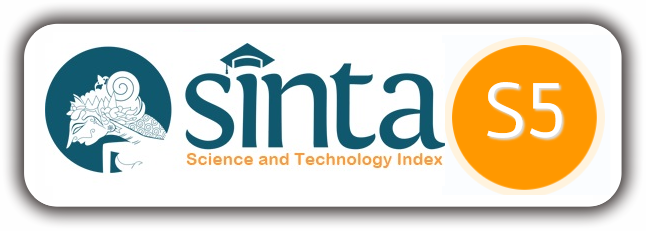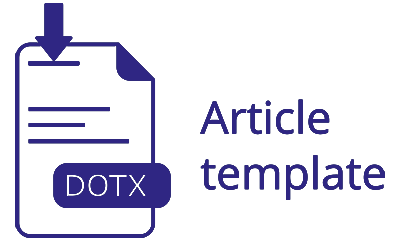Strategi Meningkatkan Akuntabilitas dan Transparansi Pengelolaan Kas Badan Layanan Umum
Abstract
The growth in the number of BLU shows an increasing trend until early 2022. Along with this increase in number, the contribution of BLU to non-tax state revenue (PNBP) also shows a positive upward trend. Almost every year state revenue from BLU continues to increase. However, the recording of this income to the state treasury is only done once every three months, so the Minister of Finance as BUN cannot know in real time. This study aims to: assess the transparency of BLU's financial management, provide alternative proposals for managing BLU accounts, and develop existing research results. Researchers explore the object of research using qualitative methods with more focus on policy analysis. In policy research studied is the policy that is being implemented. The research objects are four BLU work units in Jambi. The steps in this research include identifying the main issues, then formulating the problem, followed by developing an action plan for policy implementation and the last is conducting monitoring and evaluation. The results of this study indicate that there is a difference between the data in SPAN and the work unit’s report. The work unit reports once every three months so that the error is only discovered when they carry out the SP3B validation. Reporting delays cause problems if there are logging errors. Repairs must be carried out with a mechanism that is quite complicated and will require considerable power and effort. To overcome the current conditions, it is necessary to improve policies so that the revenue managed by BLU can be monitored at any time by BUN. The recommendation from this study is to include all BLU accounts in the Treasury Single Account (TSA) system.
References
Ajugwe, O. (2020). A critical Analysis of treasury single account policy in Nigeria. International Journal of Research and innovation in social sciences, 4(12),103-110.
Amtiran, P.Y. (2020). Pengelolaan Keuangan Negara. Journal of Management (SME’s). Vol.12 No.2 2020 p203-2014.
Aptasari, F.W., Handajani, L.& Fikri, A. (2022). Pengaruh Analisis Penentuan Cadangan Kas Badan Layanan Umum. E-Jurnal Akuntansi, 32(5), 1361-1372.
Babatz, G. (2013, April 17). Sustained Effort, Saving Billions: Lessons from the Mexican Government’s Shift to Electronic Payments. Evidence Paper. Better than Cash Alliance. Diakses pada 26 Februari 2022, dari http://betterthancash.org/wp-content/uploads/2013/12/Evidence-Paper-English1.pdf.
Ekubiat J.U., & Ime E.E. (2016) Adoption of Treasury Single Account (TSA) by State Governments of Nigeria: benefits, challenges and prospects. Journal of Finance and Accounting 4: 126-130.
Eme O.I., & Chukwurah, D.C. (2015) An Analysis of Pros and Cons-Treasury Single Account Policy in Nigeria. Arabian Journal of Business and Management Review (OMAN Chapter).
International Monetary Fund. (2014). Government Finance Statistics Manual 2014. Washington, DC: IMF.
Isa, A. A. (2016). The Treasury Single Account (TSA) as an Instrument of Financial Prudence and Management: Prospect and Problem. Research Journal Finance and Accounting. Vol.7 No.4 2016 p66-71.
Isti’anah. (2022). Analisis Strategi Treasury Single Account dalam Meningkatkan Efisiensi dan Efektifitas Pengelolaan Kas Umum Daerah. Iltizam Journal of Shariah Economic Research Vol. 6, No.1 (2022) June 2022, pp. 86-100.
Lienert, I. (2009). Modernizing cash management, IMF Technical Note and Manual, 2009(003)122. Diakses pada 5 Maret 2022, dari https://doi.org/10.5089/9781462304127.005
Madjid, N. (2012). Kebijakan Fiskal dan Penyusunan APBN, Badan Pendidikan dan Pelatihan Keuangan Kementerian Keuangan RI.
Okerekeoti, U., & Okoye, E.I. (2017). Treasury single account (TSA) in Nigeria: A theoretical perspective. Paper Treasury single account (TSA) in Nigeria: A theoretical perspective. Paper presented at the 2017 International Conference on African Entrepreneurship and Innovation for Sustainable Development (AEISD).
Oyedokun, G. E. (2016, Desember 21). Imperative of Treasury Single Account (TSA) in Nigeria. Diakses pada 2 Februari 2022, dari https://ssrn.com/abstract=2910315 atau http://dx.doi.org/10.2139/ssrn.2910315
Peraturan Pemerintah (PP) Nomor 23 Tahun 2005 tentang Pengelolaan Keuangan BLU
Peraturan Menteri Keuangan No.129/PMK.05/2022 tentang Pedoman Pengelolaan Badan Layanan Umum
Pessoa, M. & Williams, M. (2012). Government Cash Management: Relationship Between the Treasury and the Central Bank. Tech Notes Manuals.
Putra, N., & Hendarmawan. (2012). Metodologi Penelitian Kebijakan. Bandung: PT Remaja Rosdakarya.
Rudhianto, H., Utami, T., & Widarjo, W. (2022). Perbandingan Model Pola Pengelolaan Keuangan Perguruan Tingi Negeri. Jurnal MONEX Volume 01 Nomor 11 Bulan Januari Tahun 2022.
Sugiyono. (2018). Metode Penelitian Kombinasi (Mixed Methods). Bandung: CV Alfabeta.
Suhaedi, W., & Sasanti, E. (2020). Potensi Pendapatan Universitas Mataram Melalui Manajemen Kas. Jurnal Ilmiah Tata Sejuta STIA Mataram, 6(1), 518-527.
Sulaeman, A. S., & Dwinanda, R. R. (2021). Manajemen Kas Pemerintah: Implementasi Kartu Kredit Pemerintah dalam Pembayaran Belanja Negara. Jurnal Riset dan Aplikasi: Akuntansi dan Manajemen, 5(2), 187-198.
Sunyoto. D. & Susanti, F.E. (2015). Manajemen Keuangan Untuk Perusahaan. Cetakan Pertama, Yogyakarta: CAPS (Center Of Academic Publishing Service).
Tama , A. I. & Kusmiyanto, K. (2019). Kajian Kemampuan Keuangan Rumah Sakit Umum Daerah Sebagai Badan Layanan Umum Dan Pengaruhnya Terhadap Kualitas Pelayanan. Jurnal Penelitian Teori dan Terapan Akuntansi (PETA). Blitar, Indonesia, 4(1), pp.1-45.
Udo, U. A. & Esara, Y.K. (2016). Implementation of TSA and Nigerian economy Business & Economy, Market Development. Report generated on Thu, 21 Ap
Undang-Undang Republik Indonesia Nomor 17 Tahun 2003 tentang Keuangan Negara
Undang-Undang Republik Indonesia Nomor 1Tahun 2004 tentang Perbendaharaan Negara
Utari, D., Purwanti, A., & Prawironegoro, D. (2014). Manajemen Keuangan. Edisi Revisi, Jakarta : Mitra Wacana Media.
Verawati, H., Husaini, & Aisyah, S. (2015). Faktor Penentu Efektivitas Pengelolaan Keuangan Badan Layanan Umum Universitas Bengkulu. Jurnal Fairness Volume 6 , Nomor 1, 2015: 21- 34
Wang, Z., Xu, G., Zhao, P. & Lu, Z. (2016). The optimal cash holding models for stochastic cash management of continuous time. Journal of Industrial and Management Optimization, 14(1), 1-17 doi: 10.3934/jimo.2017034.
Williams, M. (2010). Government Cash Management: It?s Interaction With Other Financial Policies, Technical Notes and Manual. International Monetery Fund
This journal provides immediate open access to its content on the principle that making research freely available to the public supports a greater global exchange of knowledge.
All articles published Open Access will be immediately and permanently free for everyone to read and download. We are continuously working with our author communities to select the best choice of license options, currently being defined for this journal as follows: Creative Commons Attribution-ShareAlike (CC BY-SA)
 Abstract viewed = 69 times
Abstract viewed = 69 times
 PDF (Bahasa Indonesia) downloaded = 70 times
PDF (Bahasa Indonesia) downloaded = 70 times







